Eyelid surgery
YOUR EYELID SURGERY TREATMENT IN VALENCIA
Interventions that care for the health and aesthetics of the
most delicate part of the face
As a specialist in eyelid surgery, my goal is to help you restore freshness and vitality to your eyes. Eyelid surgery encompasses a range of aesthetic treatments, such as blepharoplasty, which aims to correct excess skin and fat bags, and other functional procedures, which not only aim to improve your appearance, but can also treat vision problems caused by drooping eyelids (eyelid ptosis) or correct eyelid malposition that puts your eye health at risk. My commitment is to offer you personalised, safe care that is tailored to your needs.
CLINICAL CASES
Upper blepharoplasty
This is a surgical procedure that aims to improve the appearance and function of the upper eyelids. It involves the removal of skin, and sometimes muscle and fat to correct the typical changes that occur with ageing. The results of this surgery are aesthetic as well as functional. In the cosmetic world, it is the third most frequently performed surgery in women and the most common in men.
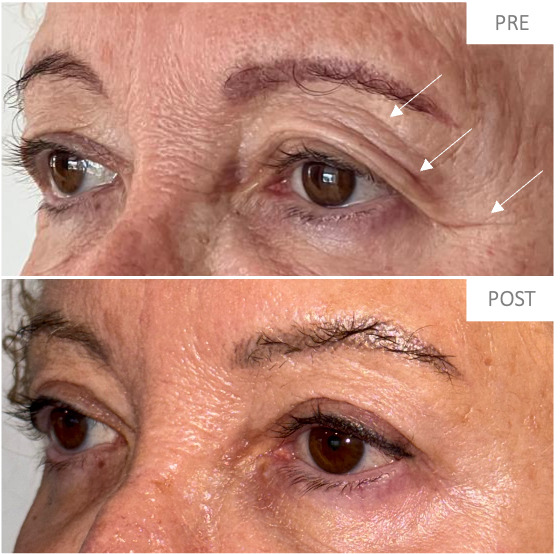
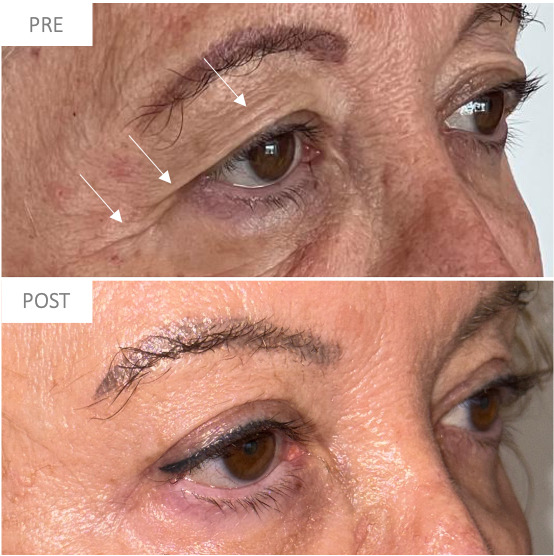
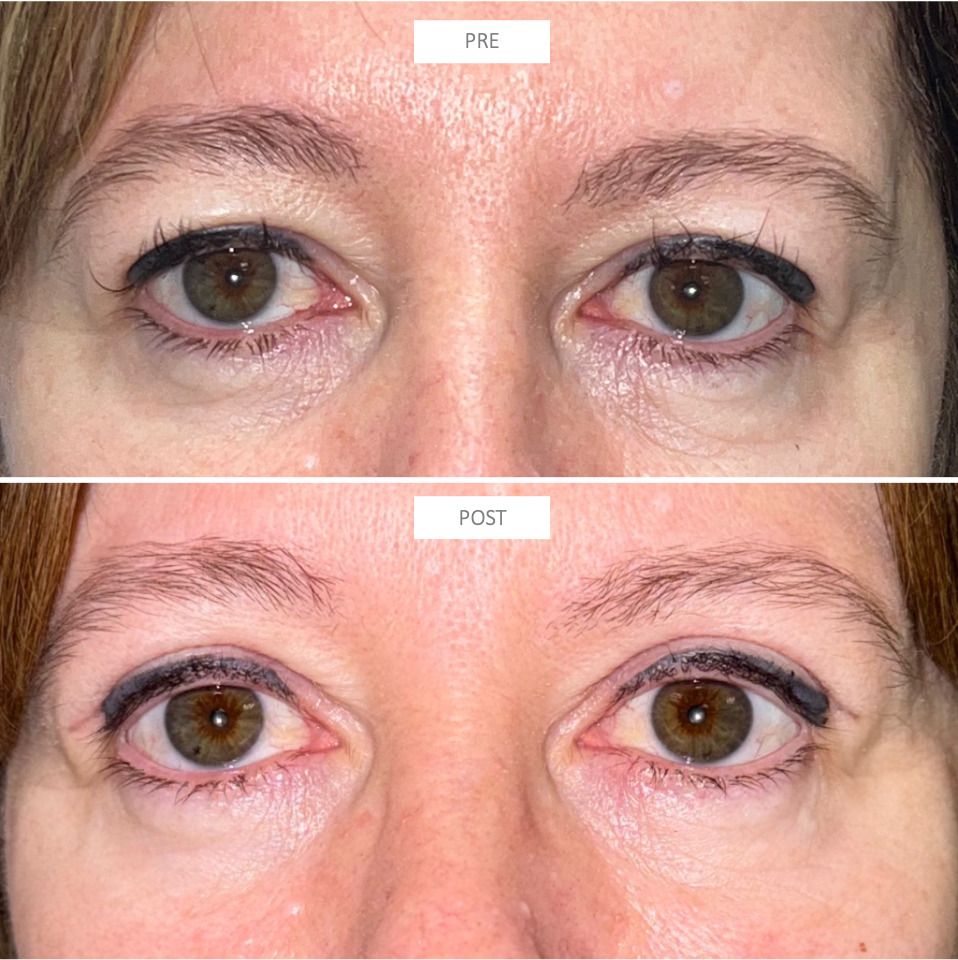
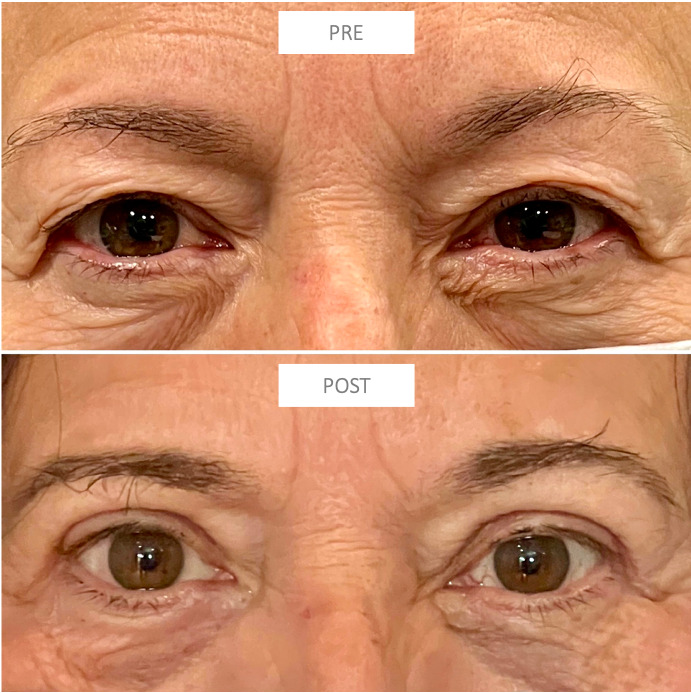
When is it indicated?
Blepharoplasty may have a functional indication, when the patient suffers visual alterations due to excess skin in the upper eyelids. However, on most occasions, this procedure is indicated for aesthetic reasons, with the aim of rejuvenating the eyes. There is no ‘ideal’ age for this procedure. A person undergoes surgery when they are uncomfortable with the appearance of their eyes and want to improve them.
What can I expect and when will I see the results?
Blepharoplasty in general achieves excellent aesthetic results and gives a rested and more youthful appearance. Eyelid surgery almost always involves the appearance of bruising and oedema, to a greater or lesser extent. To reduce them as much as possible, the first week it is recommended to apply local cold and sleep with several pillows. The stitches are removed one week after surgery. A month after the surgery, we can see an almost final result, although a slight level of oedema may remain. After three to four months, we will be able to see the definitive result. The scar will improve up to a year after surgery, becoming almost imperceptible.
How long does the intervention last?
The surgery is performed in one hour
Which anaesthetic is used?
It can be performed under local anaesthesia with sedation or general anaesthesia.
Will my scar be visible?
The scar is located just at the level of the upper eyelid crease, so that the scar is not visible with the eyes open and can only be seen for the first few weeks/months with the eyes closed. However, the blepharoplasty scars are hardly noticeable after 4-6 months and go unnoticed.
Will the shape of my eyes change?
No. If the surgery is performed correctly by a surgeon specialised in this field, the eye will still have the same shape as before the surgery, but it will have a rejuvenated appearance.
Is the postoperative period painful?
No. The patient may feel swollen and slightly uncomfortable due to swelling or any bruising that may have formed during the first few days.
When will I be able to lead a normal life?
Recovery from this procedure is quick. The stitches are removed after a week. If there is any slight bruising, it can usually be covered with make-up or a tinted sun protection cream. You will be able to resume your daily activities 8-10 days after surgery.
Can upper blepharoplasty be combined with drooping eyelid surgery or Ptosis?
Yes, if the patient has not only excess skin but also ptosis (drooping eyelid), blepharoplasty surgery can be combined with eyelid ptosis surgery.
How long do I have to wait before applying make-up?
If the make-up is not in contact with the incisions, it can be used almost immediately. In fact, we recommend its use to conceal bruising. Make-up should be avoided on the incisions in the first month after surgery.
Is there an age limit for this surgery?
It can be performed from the age of 18 up to any age, however advanced, as it is an outpatient surgery performed most of the time under local anaesthesia.
What are the risks?
Upper eyelid blepharoplasty is generally considered safe. However, like any surgery, blepharoplasty is not without potential complications such as infection, bleeding, scarring, asymmetry, over- or under-correction, dry eye and the need for additional surgery. Fortunately, the complication rate is very low, especially in the hands of a surgeon who specialises in periocular surgery.
Lower blepharoplasty
This is a surgical procedure designed to improve the appearance of the lower eyelids. It attempts to remove excess skin and remove or reposition excess fat that accumulates in the under-eye area, resulting in a fresher, more youthful appearance.
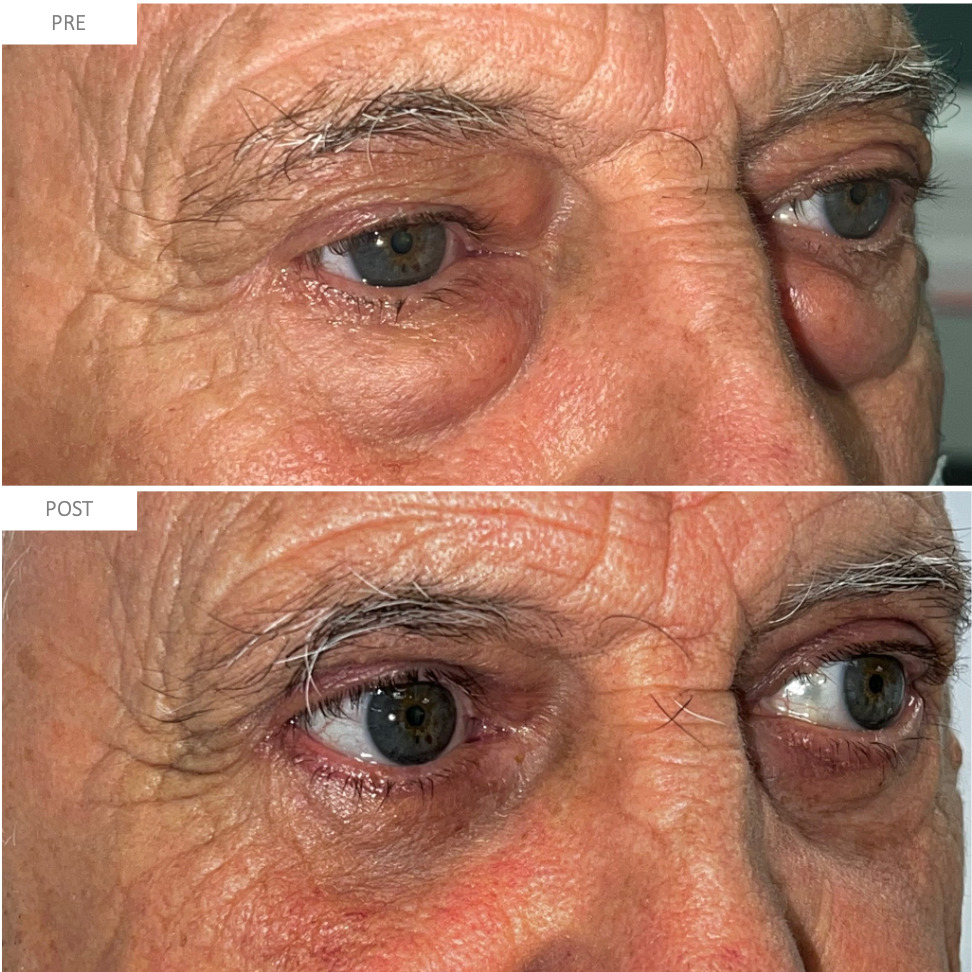
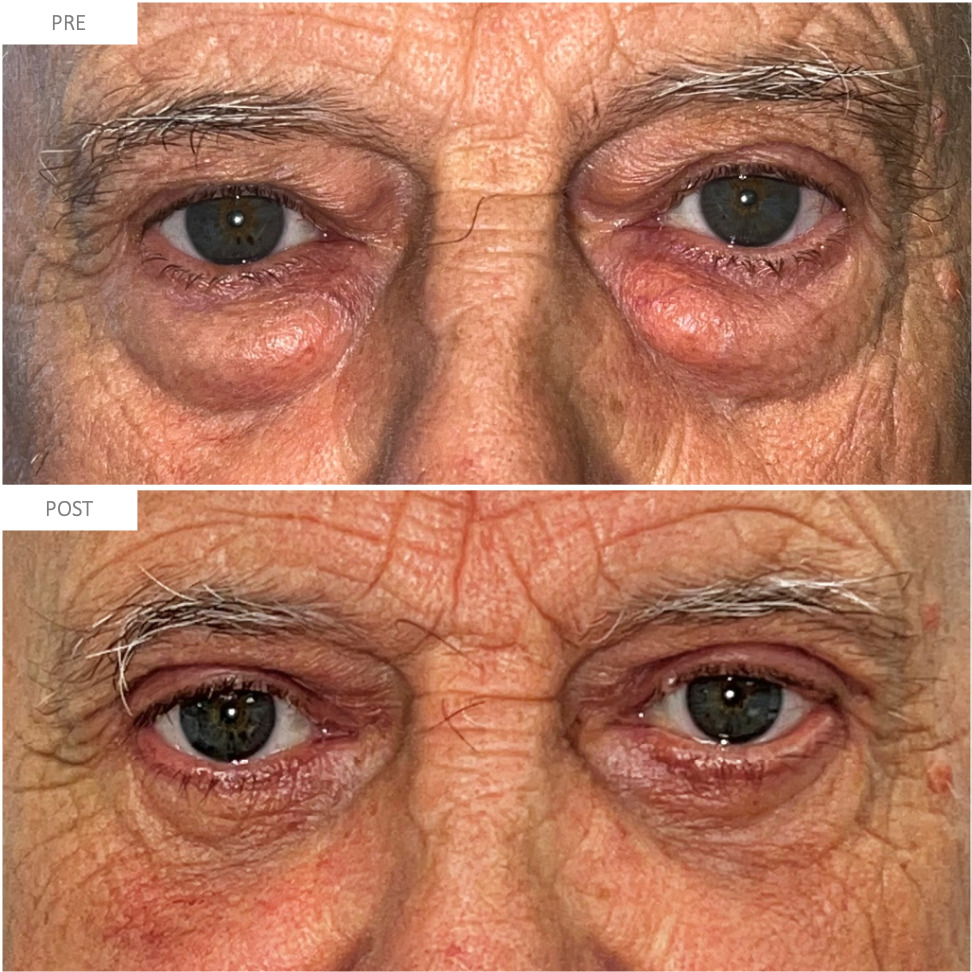
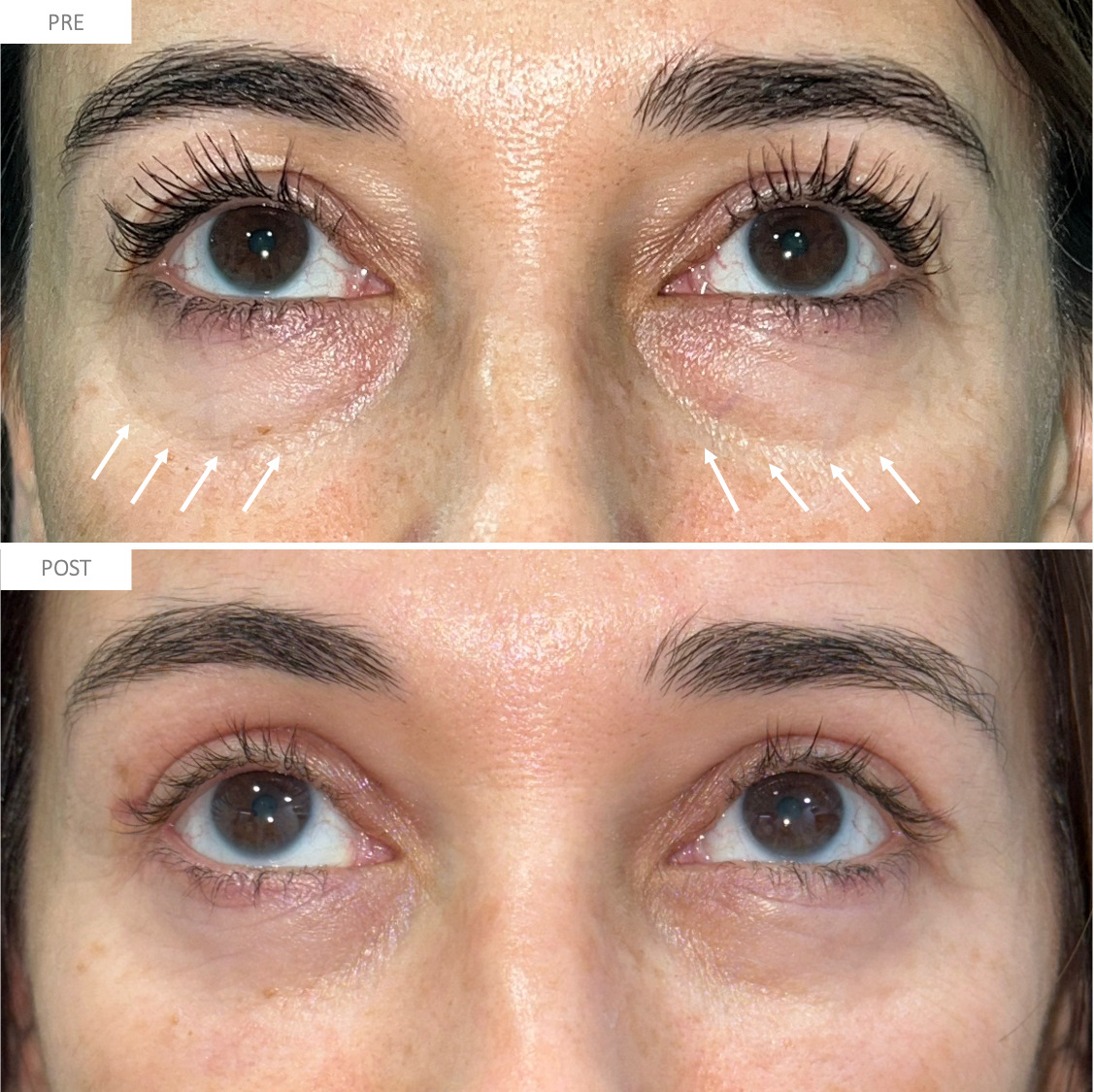
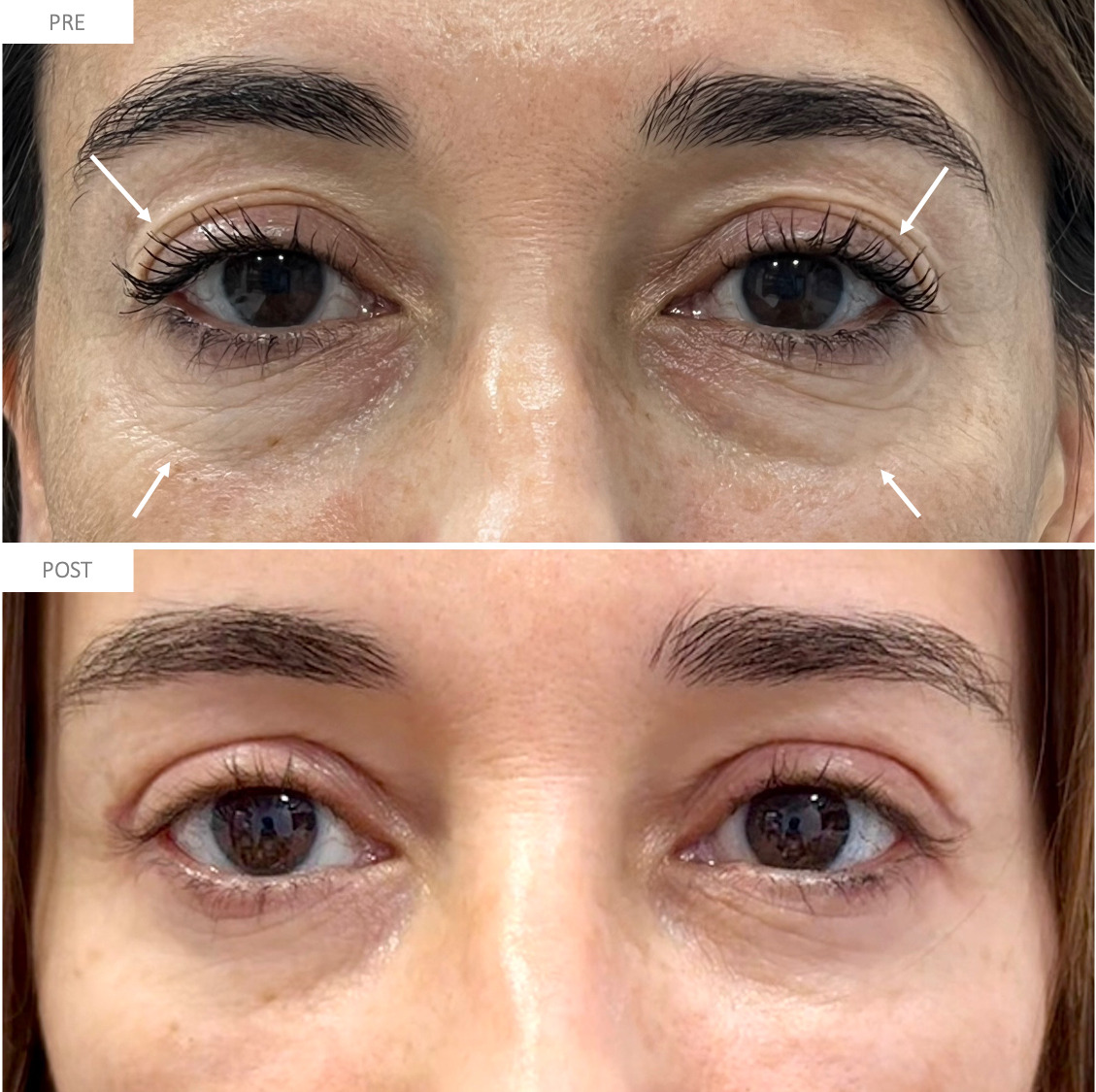
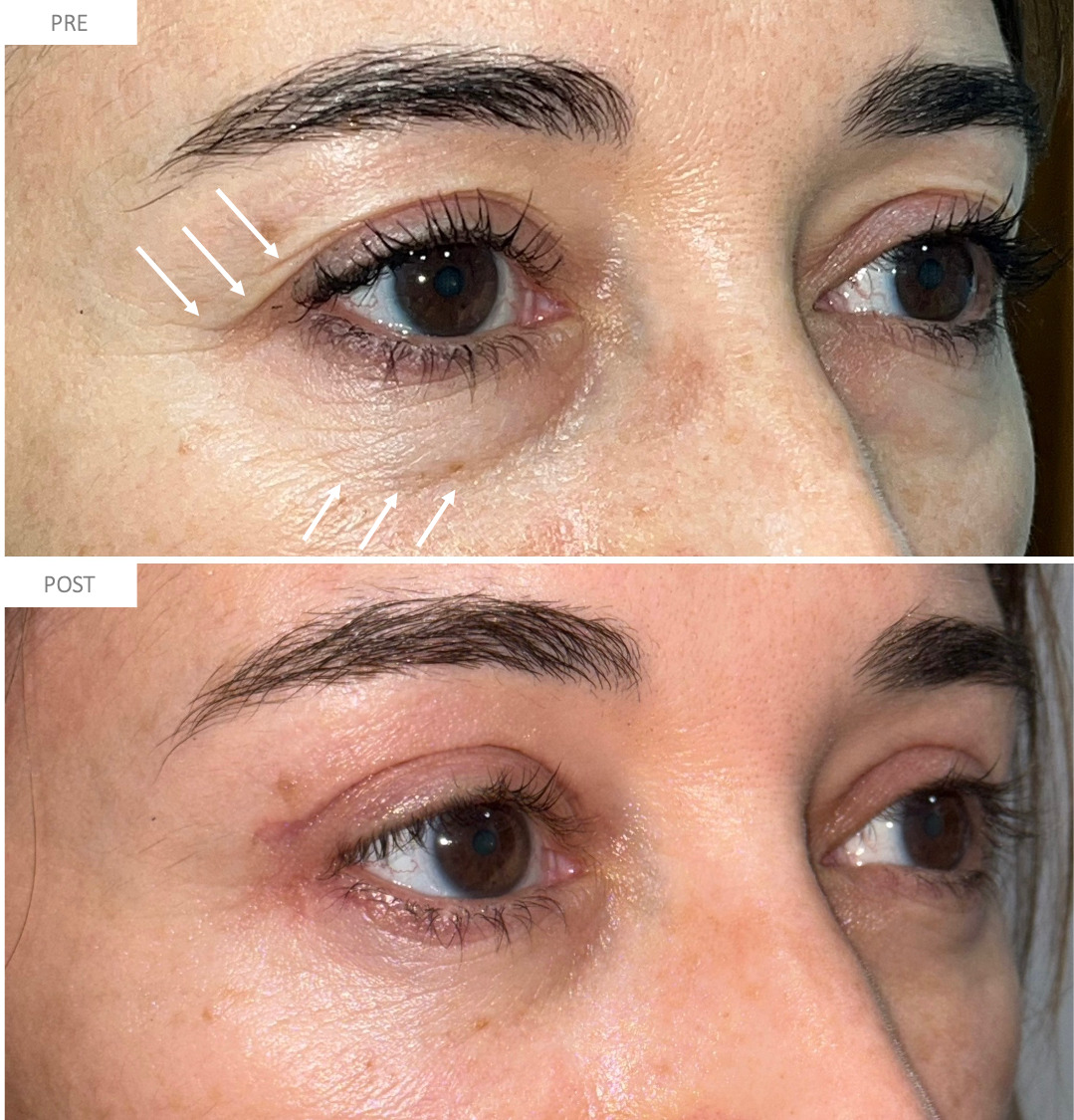
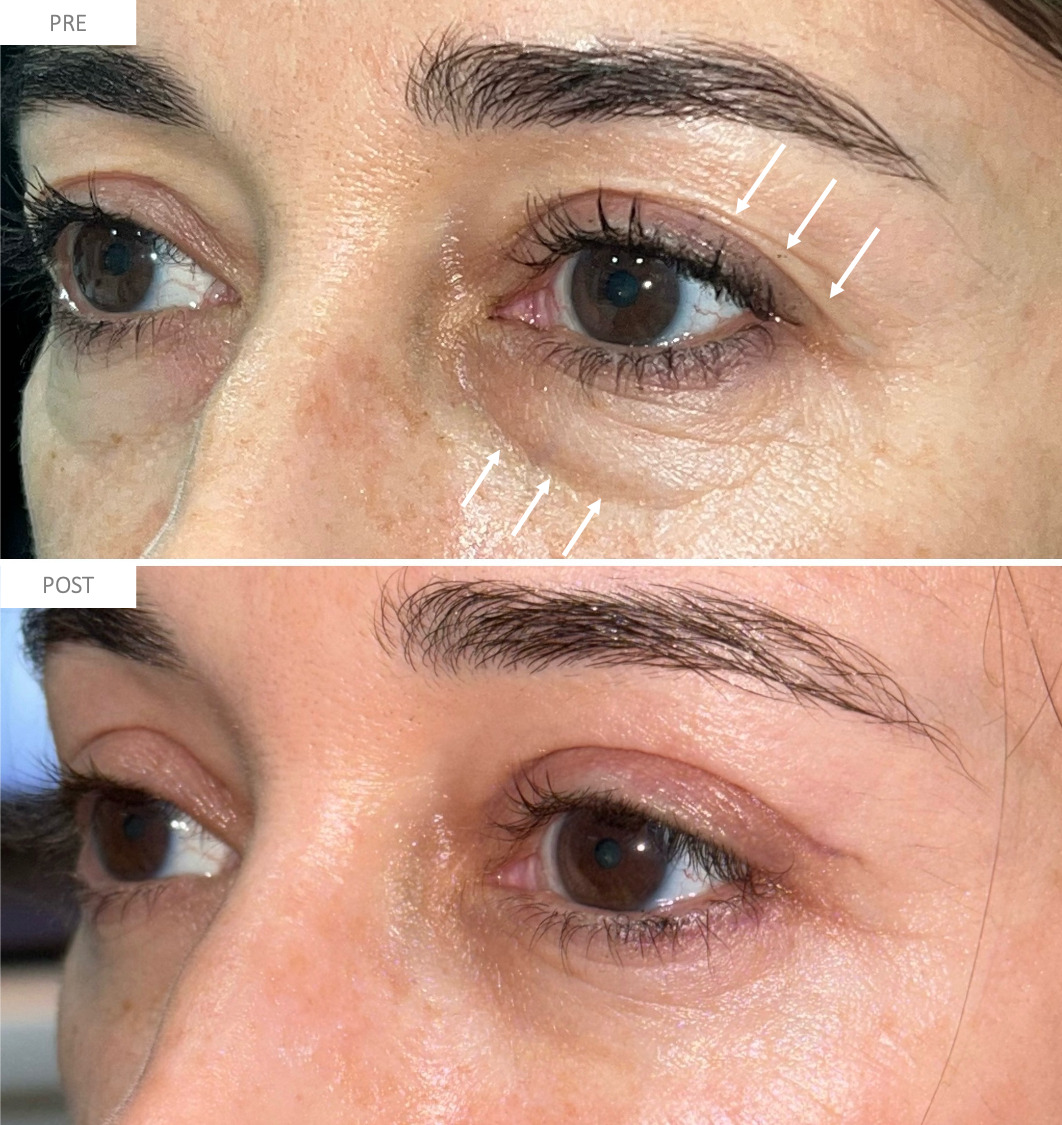
When is it indicated?
The main reason for operating on the lower eyelids is fundamentally the presence of the well-known ‘fat bags’. Therefore, blepharoplasty of the lower eyelids is based on the management of fat, both in its removal and its relocation to other areas where the fat does not bother, but replaces the loss of volume that occurs in certain areas with age, improving the aesthetic result.
What techniques are available?
This surgery can be performed either from the inside of the eyelid using the transconjunctival approach, so as not to leave a scar, or, if there is a significant excess of skin, it is performed transcutaneously, in order to remove the excess skin.
How long does the lower blepharoplasty procedure take?
The surgery takes about an hour.
Which anaesthetic is used?
It can be performed under local anaesthesia with sedation or general anaesthesia.
Will my scar be visible?
If the transconjunctival technique is used, the incision is made on the inside of the eyelid and does not leave a scar. If the transcutaneous technique is performed or it is necessary to remove excess skin, the scar is located just below the eyelash line, being very well camouflaged. The scars are barely visible 4-6 months after the surgery and go unnoticed.
Will the shape of my eyes change?
No. If the surgery is performed correctly by a surgeon specialised in this field, the eye will still have the same shape as before the surgery, but it will have a rejuvenated appearance.
Is the postoperative period painful?
No. The patient may feel swollen and slightly uncomfortable due to inflammation or a bruise that may have formed during the first few days. Usually the discomfort is well controlled with the usual analgesia (paracetamol).
When will I be able to return to normal life?
Recovery from this procedure is quick. The stitches, if present, are removed after a week. If there is any slight bruising, it can usually be covered with make-up or a tinted sun protection cream. You will be able to resume your daily activities 8-14 days after surgery. To speed up recovery, we recommend applying local cold and sleeping with several pillows for the first week.
What are the risks?
Lower eyelid blepharoplasty is generally considered safe. However, like any surgery, blepharoplasty is not without potential complications such as infection, bleeding, scarring, asymmetry, over- or under-correction, dry eye and the need for additional surgery. Fortunately, the complication rate is very low, especially in the hands of a surgeon who specialises in periocular surgery.
Palpebral ptosis or drooping eyelid
Palpebral ptosis is a condition in which the upper eyelid is lower than normal. The most common cause is age-related muscle dehiscence and can affect one or both eyes. Surgery aims to lift the eyelid to improve both vision and appearance.
The operation is indicated for aesthetic or functional reasons, especially when the eyelid affects the visual field or causes discomfort such as headaches when the eyebrows are strained. In children with congenital ptosis, surgery should be performed early to avoid the risk of amblyopia (lazy eye).
The procedure is performed under local anaesthesia with sedation, which allows for greater precision. Depending on the function of the levator muscle, its action is strengthened or the frontalis muscle is used if this function is very weak. The surgery consists of a small incision in the natural crease of the eyelid, ensuring that the scar is practically invisible.
The procedure takes about 45 minutes and can be performed on one or both eyes depending on the case. After surgery, it is normal to experience swelling and bruising which improves quickly. If the eyelid height is not as desired, further correction may be considered.
The expected result is an eyelid in a more natural position, improving vision and aesthetics, with a more open and symmetrical eye.
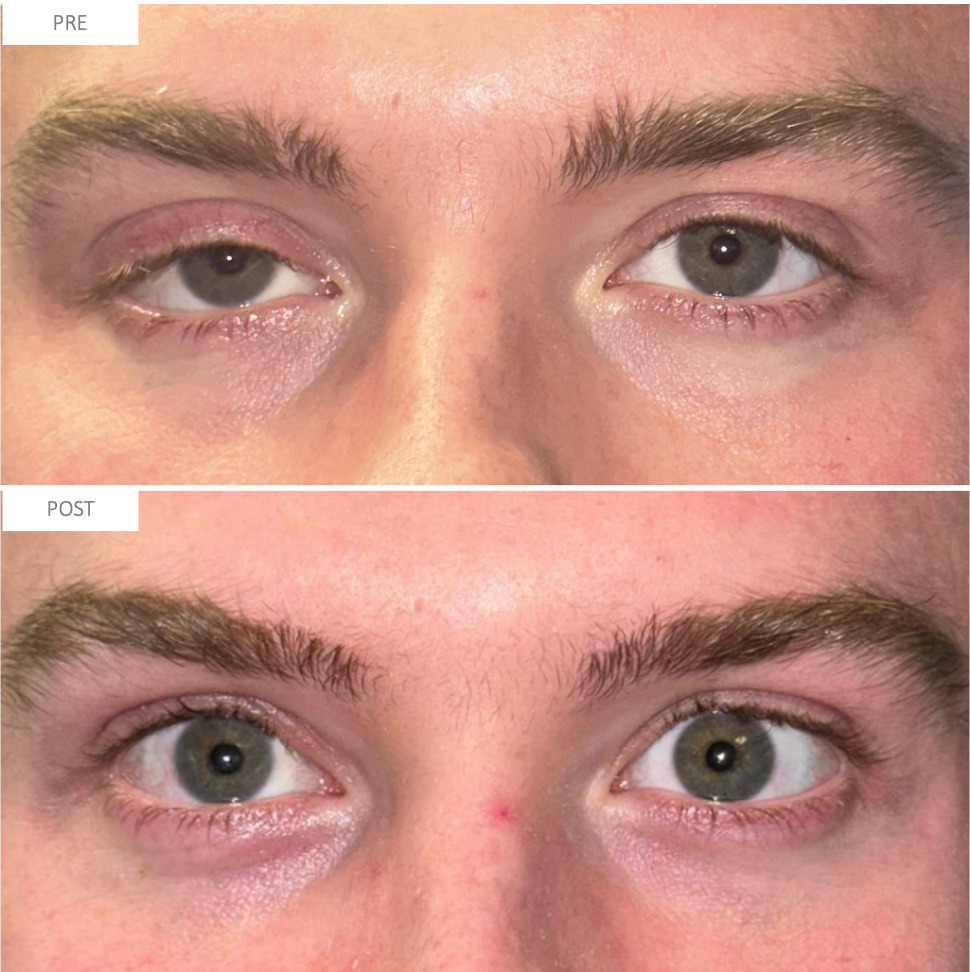
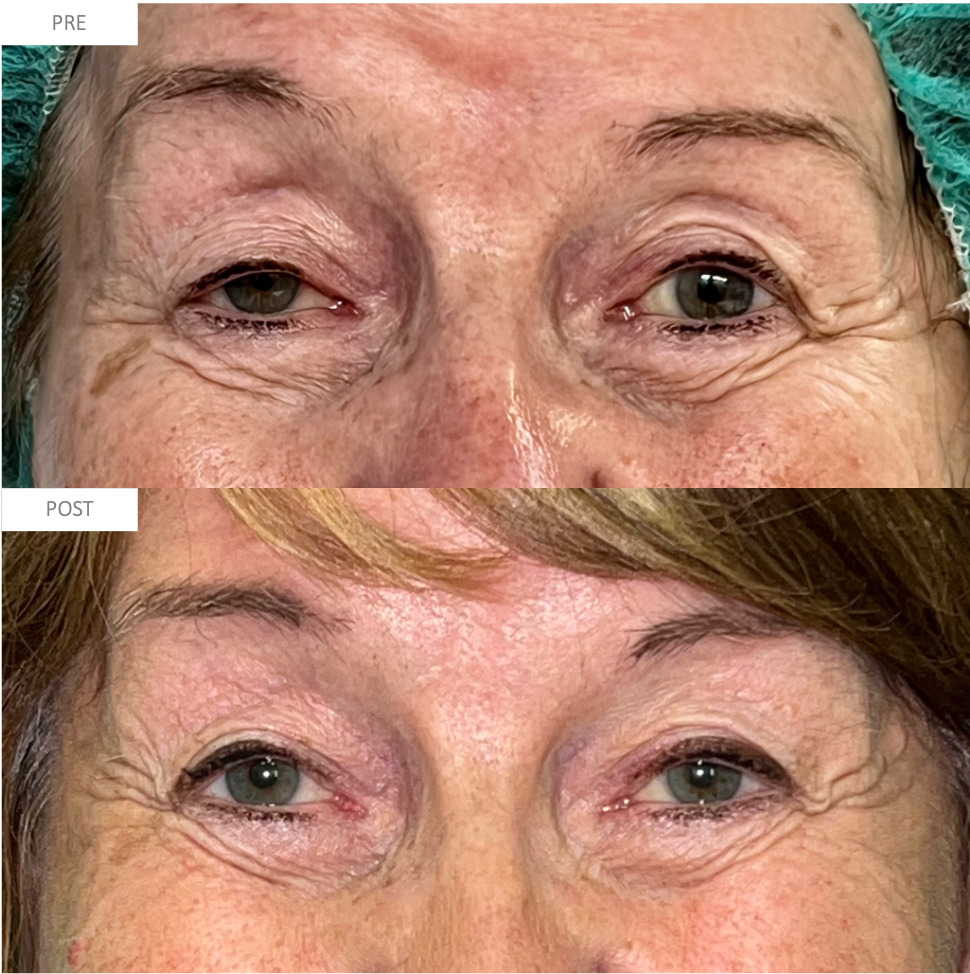
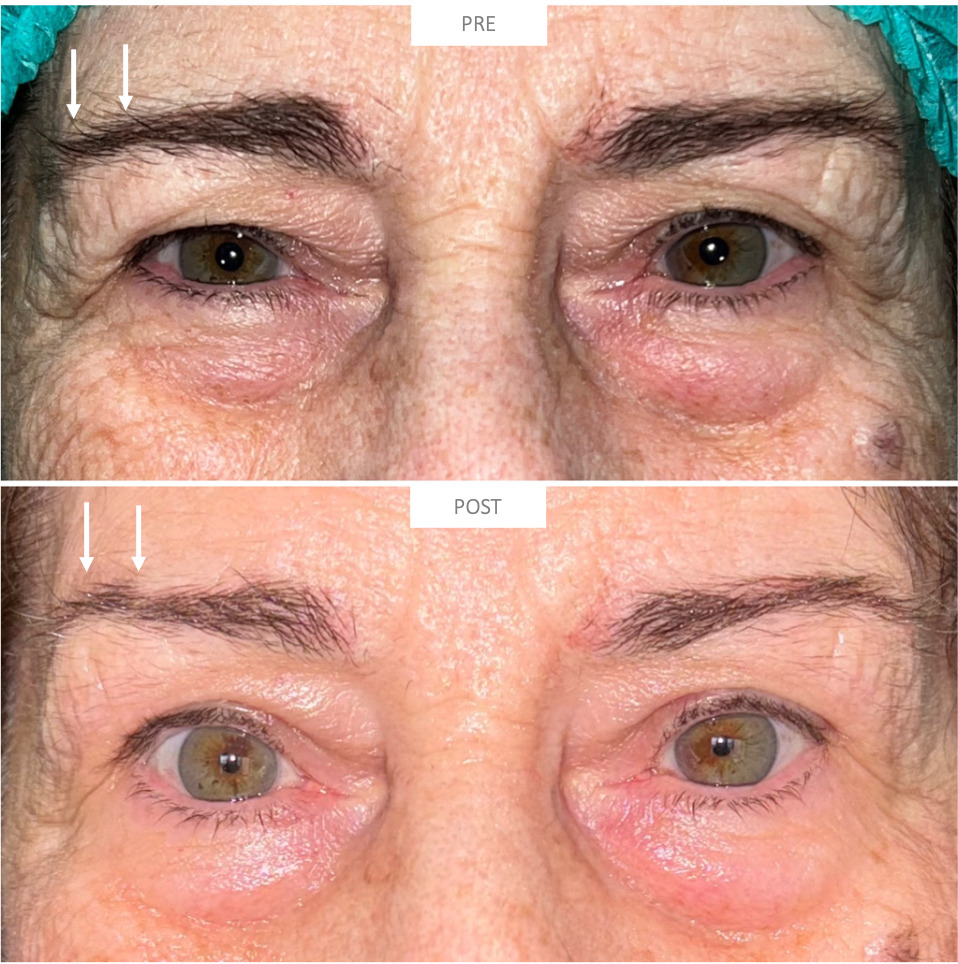
Eyebrow lift
Eyebrow ptosis, or drooping eyebrow, is commonly caused by ageing, as over time the tail of the eyebrow tends to droop, giving a sad or melancholic look.
Direct brow lift, or browplasty, is the most commonly used technique to correct this. It consists of repositioning the eyebrow by means of a wedge-shaped resection, with the scar hidden in the edge of the eyebrow hair. There are also other options such as indirect lifting, internal pexy during an upper blepharoplasty or temporary lifting with botox.
The procedure is usually performed under local anaesthesia and has a good safety profile. Although risks are minimal, they may include infection, bleeding, scarring or asymmetry, although these are rare.
Chalazion and other palpebral
lumps or lesions
Eyelid lesions such as chalazion, styes and warts are very common. Fortunately, most of these are benign and can be easily treated in the doctor’s office.
Chalazia and styes are the most common. These lesions appear due to the obstruction of a lacrimal gland, which causes inflammation and discomfort in the eyelid. Surgical treatment is quick, minimally invasive and leaves no visible scar, as the incision is made on the inside of the eyelid.
The procedure is performed under local anaesthesia, lasts between 15 and 40 minutes and is painless, except for a slight discomfort when the anaesthesia is applied. This procedure allows for a quick and discreet recovery.
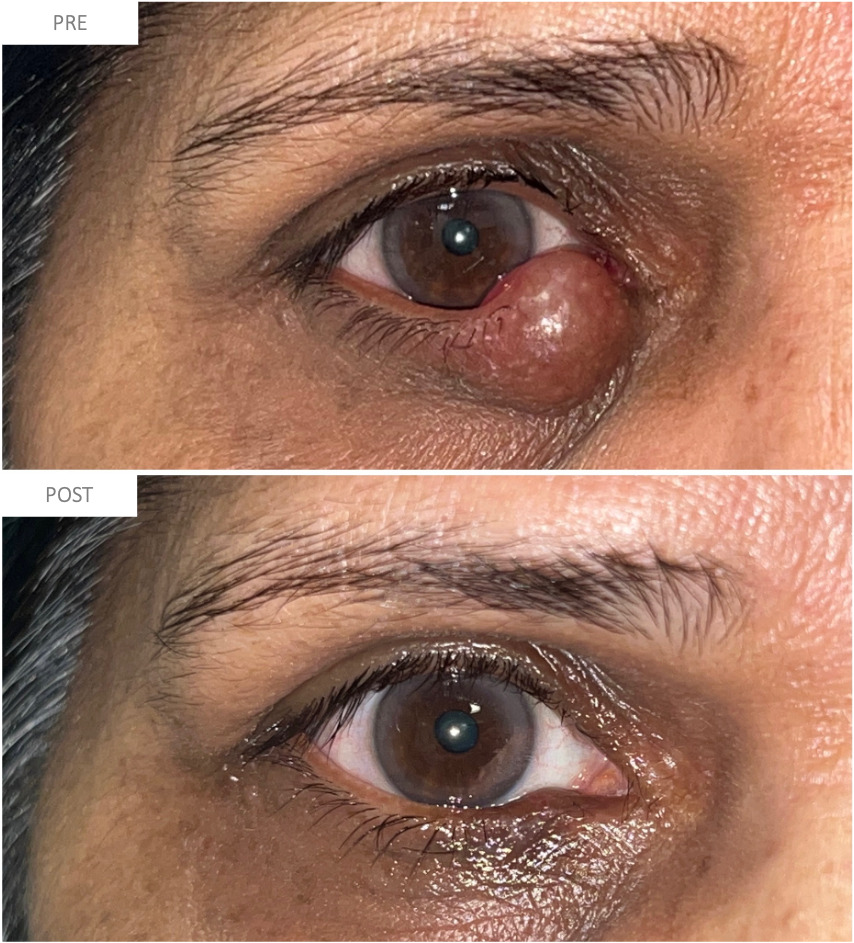
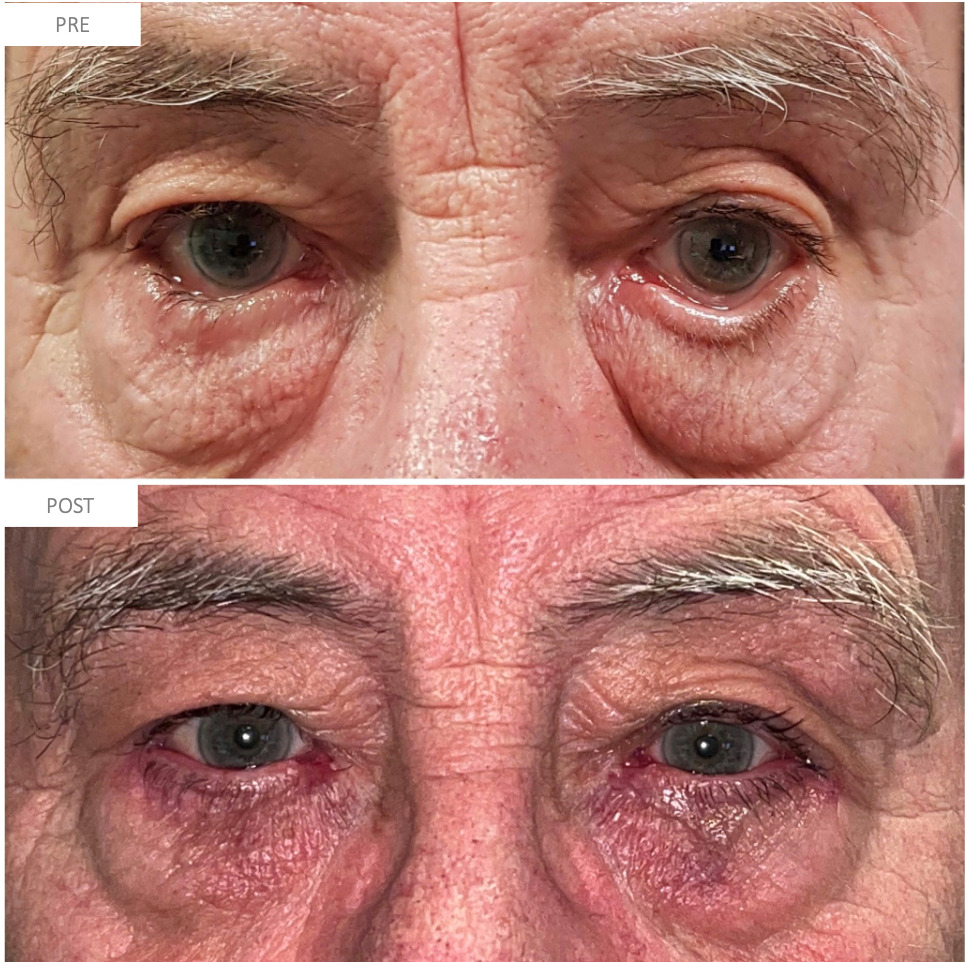
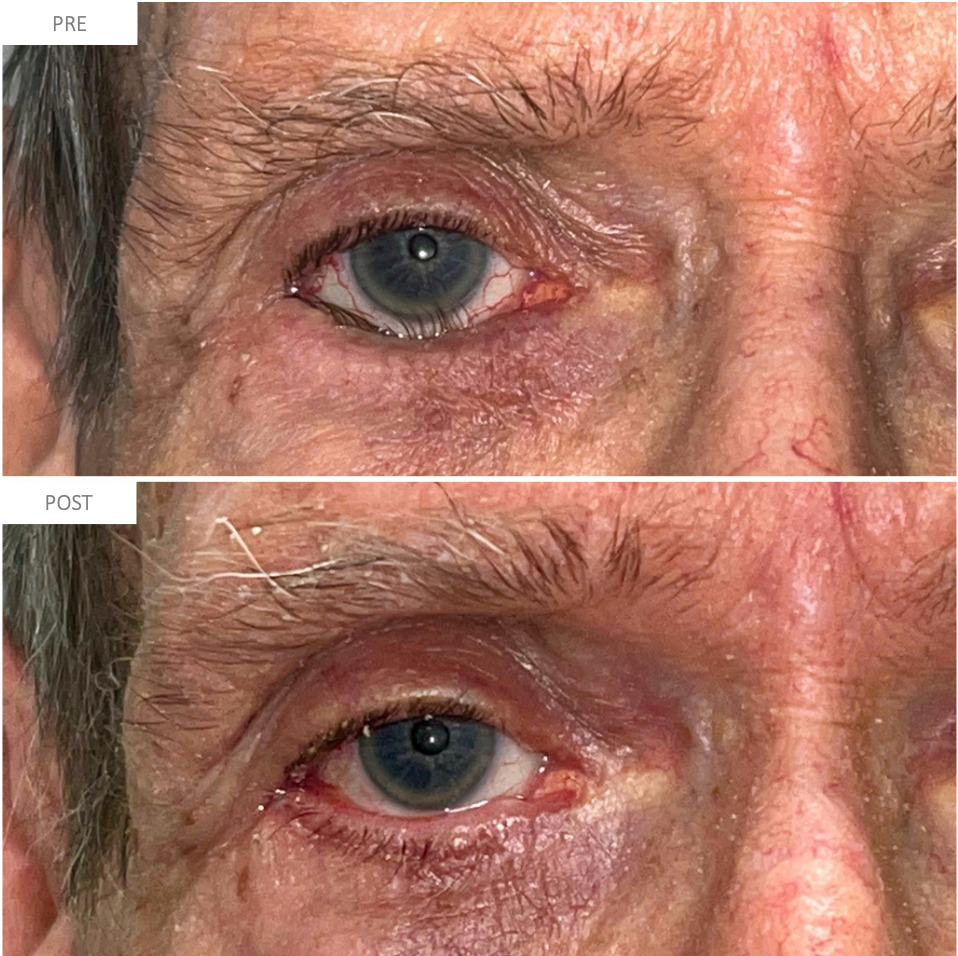
Entropion
Entropion is a condition in which the eyelid, usually the lower eyelid, folds inwards, causing the eyelashes and the edge of the eyelid to rub against the surface of the eye. This causes significant discomfort and, in severe cases, can lead to severe corneal damage, such as infection, ulcers or loss of vision.
The most common causes include involutional or senile entropion, where tissue laxity due to ageing alters the position of the eyelid. It can also be scarring, resulting from internal injuries or burns, or due to muscle spasms that abnormally contract the eyelid muscles.
The definitive treatment is surgical and aims to reposition the eyelid so that it returns to its normal position without turning inwards. The surgery consists of small incisions under the eyelashes and at the lateral end of the eyelid to adjust tissues, muscles or tendons. It is performed under local anaesthesia, lasts less than an hour and recovery is quick, with swelling or bruising that improves in a few days.
Although it is a safe surgery, there is a low risk of complications such as infection, bleeding or abnormal scarring, although these are rare.
Ectropion
Ectropion is a condition in which the lower eyelid is turned outwards, which can lead to discomfort, irritation, constant tearing and an increased risk of infection or eye damage due to increased exposure of the eye. It can also represent a significant cosmetic impairment.
The main causes of ectropion include the involutional or senile form, where ageing causes tissue laxity, altering the position of the eyelid due to gravity. It can also be paralytic, resulting from a dysfunction of the orbicularis oculi muscle that affects eye closure. Another cause is scarring, in which the eyelid becomes inverted due to traction of the skin under the eyelid, such as after removal of a skin lesion on the cheek.
Treatment for ectropion is exclusively surgical. Surgery aims to reposition the eyelid, restoring its contact with the eye to improve both function and appearance. During the procedure, a small incision is made in the eyelid and the tissues, muscles or tendons are adjusted to return it to its normal position.
It is performed under local anaesthesia, lasts less than an hour and recovery is usually quick. It is normal to experience some swelling or bruising which improves within a few days. Although the risks are low, as with any surgery, they may include infection, bleeding or abnormal scarring, although these complications are rare.
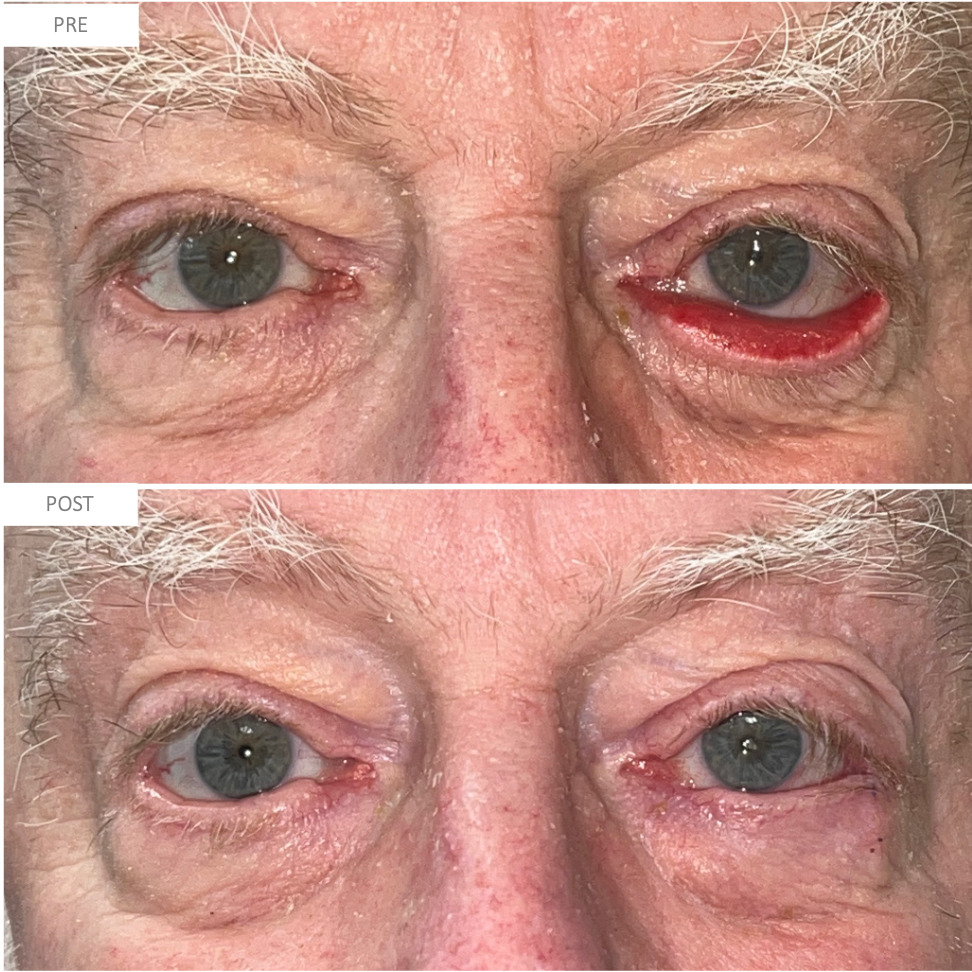
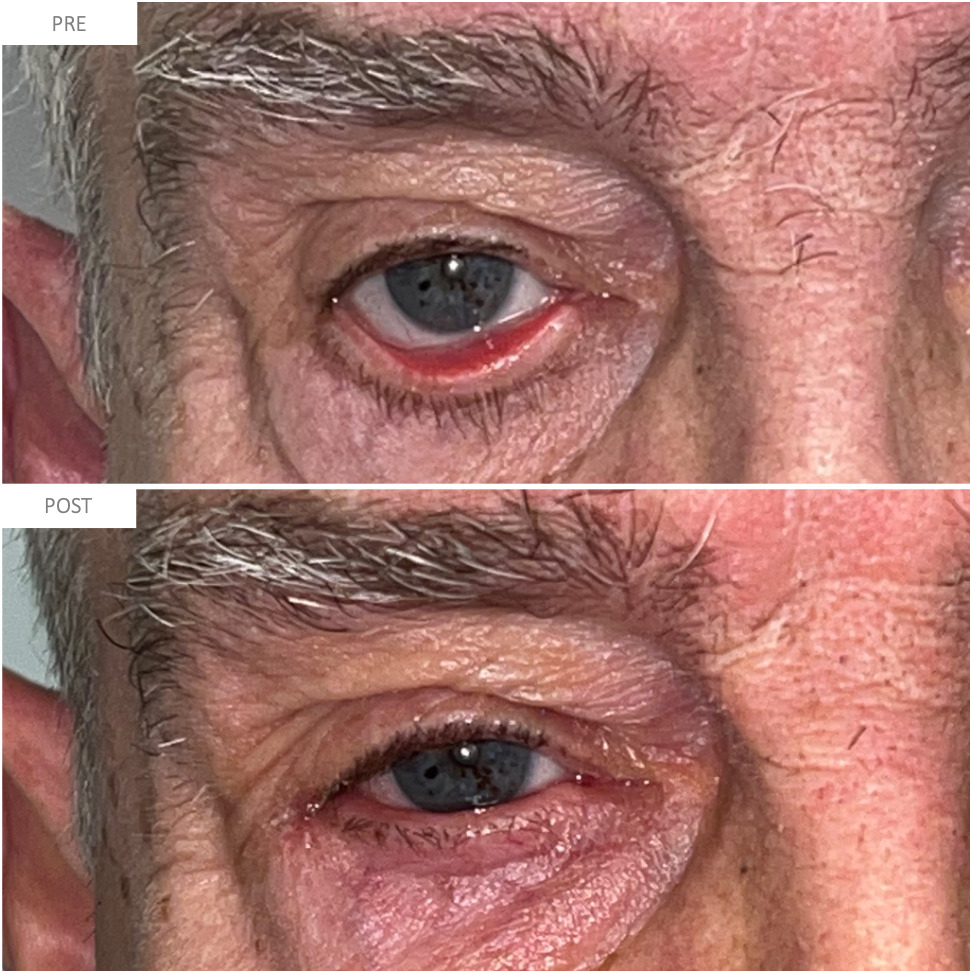
Why choose us?
Personalised attention
Experience
Accuracy
We have a challenge: a need to identify and, if possible, address or improve.
More than 80% of the information we receive is non-verbal and the gaze plays a key role in this connection with the world. Our eyes are our calling card and when we have drooping eyelids or a tired look, patients feel uncomfortable and their self-esteem is damaged.
Nowadays there are many non-ophthalmologist surgeons who perform blepharoplasty, but why should you choose an oculoplastic ophthalmologist for eyelid surgery? Because no better specialist than an ophthalmologist will take care of your eyes and the potential complications that can arise from surgery on the surrounding tissues.
My goal is to help my patients look as young as they feel.
And always taking care of the most important thing: their eyes. That is, to see and look good.
Do you have any doubts?
I am here to help you. Feel free to contact me with any questions or concerns.